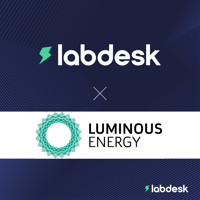labdesk provide a cloud + cyber security platform & services dedicated to enabling innovative teams...
What is an 'XLA' & how can they benefit your team?
The term SLA (service level agreement) is common across multiple industries. It establishes a set of deliverables agreed between two parties, typically a customer & service provider. The service provider produces a set of expectations to deliver the service they are offering, and this is measured using some form of metric.

Whilst having solid SLA’s are important what impact does it really have on your team?
There’s a glitch in the system...
Many times we have seen the standoff between a service provider & customer. The customer argues they are not happy with a product or service. The service provider produces a set of statistics proving they have met their SLA. This then becomes a stalemate. The customer isn’t happy, the user experience is poor & the service provider won’t budge. Often leading to a breakdown in the relationship.
There is a better way...
The Solution = 'XLA'
XLA's (Experience level agreements) are different. They are less traditional & less clunky than it’s predecessor and are more focused on delivering outcomes. An XLA is a measurement of a desired outcome set between a customer & service provider. The sole aim of an XLA is to add value to a team in helping them achieve their goals, over just producing statistics.
Simply put XLA’s take a broader, user centric approach to supplying a service.
How does it impact your team?
Lets take a look below at some of the many ways an XLA positively impacts your team and business:
- User Experience – An XLA prioritises the overall experience of your end users. Where traditional SLA’s focus on statistics such availability & response times – they don’t take into consideration the end user experience. XLA's focus on user happiness levels.
- User-Centric Metrics – The sole purpose of an XLA is to add value to your team, but how is this measured? Simply put an XLA measures the experiences received from end users. For example system usability, responsiveness, quality etc… The purpose of these metrics is to ensure that your team are able to achieve their desired outcomes.
- Flexible & Adaptable – Business needs & priorities change. What your business requires to be successful adapts over time. An SLA is rigid and not often can be adapted or changed. An XLA however is different. It flexes around your business needs and can be adjusted based on feedback & evolving expectations. Because of this XLA’s allow for continuous improvement.
- Business Goal Driven – XLA’s allow you to work with your managed service provider more closely than ever before. labdesk strongly believe that technology is an investment in your business, so it’s important you are getting the most out of it.
By aligning XLAs with business goals it highlights the importance of user experience & satisfaction. Showing you the true impact of your technology investment to the overall success of your business.
- Improved Communication & Collaboration – As mentioned above, an XLA brings you closer together with your service provider. It cuts out the jargon & statistics - as the measurables & outcomes are clear to everybody. It moves away from the traditional SLA experience where there is a barrier between the customer & the service provider.
Partners can now benefit as the user needs are directly addressed. Thus, making it easier than before to communicate when something needs to change and work together to set achievable outcomes.
Technology drives value within business. It allows teams to innovate, collaborate and build business assets. This is why it’s important for your partner to lead with XLA’s first. Adding true value to your team & what you do to achieve success.
The ultimate offering integrations an 'XLA' along side a fair 'SLA, so that the relationship and experience is enhanced for both parties.





